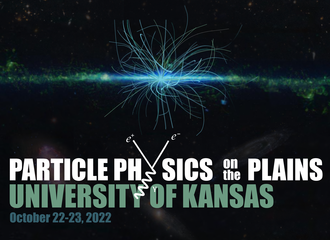Speaker
Description
Very High Energy (VHE) gamma rays and charged cosmic rays (CCRs) provide a unique observational window into the inner workings of our universe. With the advent of new observatories, they provide access to exotic events and Beyond Standard Model (BSM) phenomena at the center-of-mass energy scale, currently inaccessible to terrestrial experiments like the Large Hadron Collider (LHC). One of the major challenges at Imaging Air Cherenkov telescopes (IACTs) designed to look for VHE gamma rays, is the separation of gamma ray-initiated air showers from the background of air showers triggered by CCRs. Two other less well-studied problems relevant to IACTs are a) the classification of different primary nuclei among the CCR events and b) identification of anomalous events initiated by Beyond Standard Model (BSM) particles that do not conform to known shower patterns of either hadronic or gamma ray primaries. In our work, we have tried to tackle these problems by using machine learning approaches (more specifically, deep learning algorithms). Traditional cosmic ray studies utilize multivariate analysis based on derived shower properties to perform gamma ray-CCR separation. In our work, we are training our ML architectures on full simulated shower images, as opposed to training on just a few derived shower properties in order to avoid the significant reduction of shower information.
In this work, we simulate air shower images initiated by Standard Model (SM) primaries - gamma, proton, Helium and Carbon and employ the techniques of binary and multi-category classification using convolutional neural networks (CNNs). CNN is an Artificial Neural Network that is extremely useful for image recognition and pattern detection. Additionally, by simulating Z$'$ shower images as a prototype exotic event, we pioneer the use of Autoencoder to pick out exotic BSM-initiated showers that are visually indistinguishable from the standard cosmic ray showers. The latter technique has been studied previously in the context of collider physics, to tag anomalous BSM candidates in a model-independent way. In this study, for the first time, we demonstrate the efficacy of these techniques in the domain of VHE gamma ray experiments.
Our binary classifier is capable of distinguishing air showers triggered by gamma rays from the ones initiated by protons with $>$ 99% accuracy. Our multi-category classifier has given good but relatively modest performance for the identification of nuclear species, with best identification of carbon nuclei initiated showers. Proton and helium nuclei-initiated showers are found relatively harder to differentiate. Our autoencoder has also been able to tag Z$'$-initiated shower images as anomalous images with around 99% accuracy. We hope that the techniques used in our work can potentially be implemented in the current and future cosmic ray experiments to maximize the physics potential of these experiments. This would especially enable us to tap into the full potential of cosmic ray experiments as BSM search tools.

